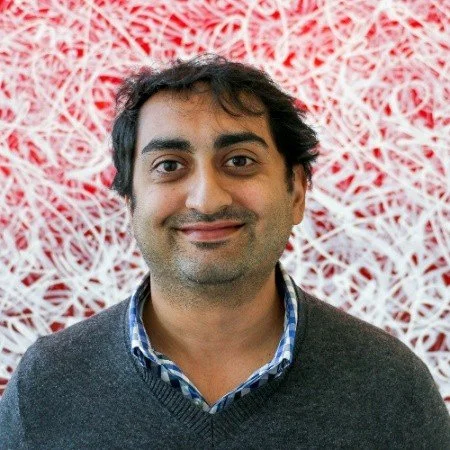Hersh Tapadia

CEO & Co-Founder | Allstacks
Hometown: Charlotte, NC
Alma Mater: North Carolina State – BS, Electrical Engineering; Duke University – MS, Biomedical Engineering
Hobbies: I love to cook and travel
What was your first Job?
Between high school and college, I had an internship as a software engineer at IBM; and I quickly became disenchanted with the organization, as I felt disconnected from the outcomes we were seeking. My second job was for a neighbor who had a startup company—one that was experiencing hyper-growth—and that experience was addicting.
What influenced you to become an entrepreneur?
When I was five years old, my dad quit his job to start a small business; so, I grew up around the journey, and it felt very natural to me. In fact, as a kid, the perceived stability (my dad never got laid off after all) felt more secure than a corporate job. Then, while I was a student at NC State, I participated in an entrepreneurship program and received a very small amount of money to start a company as my senior project. That was how my first company was born—a medical device company that automated the detection of tuberculosis in India and East Africa. After I graduated, the company was acquired by a startup spinning out of Johnson & Johnson.
What inspired Allstacks?
In my previous engineering leadership roles, I recognized a communication gap between our engineering team and non-technical stakeholders that prevented us from communicating how our organization was doing and how effective our teams were. There was no clear, actionable measure. I stored this idea in the back of my head. Fast forward to when I partnered with Jeremy, our CTO, and we began exploring this challenge further. Initially we interviewed a few hundred engineering leaders and found our struggles shared amongst all of them. We verified they had the same pain—the inability to measure the effectiveness of engineering teams. We also confirmed that the source of the problem was the ineffective communication between engineering and the rest of the organization. We saw an opportunity to make technical information consumable to non-engineers, align it to the goals of the business, and support better decision-making. And that's what led us to build Allstacks in 2017.
Did you learn anything during fundraising that you wish that you had known beforehand?
One fascinating thing I learned was that investors of different sizes and in different geographies think about outcomes differently. A lot of this is because of access. Joining the Techstars program in Austin—where we met S3 Ventures—gave us a network that I didn't have access to in Raleigh. It opened my world to different types of investors. One of the best things that happened was expanding beyond North Carolina and taking a hybrid fundraising approach—developing relationships with investors in Texas, California, New York, and Boston. Spending time with all these investors, who think differently, helped to synthesize “What's the right path for us?”.
If I were to do something differently, or give advice to others, it would be to really make sure you understand the nature of your business and what the capital needs are. Not every company is built the same way, and you must make sure you are aligned on your capital stack, investors, board, and advisors.
When building an executive team, what are your most important considerations?
In an early-stage company, it’s important that our leadership team can seamlessly traverse between individual-level and executive-level work. The ability to do the work is just the cost of entry, but that's not what sets you apart. There are a lot of talented people out there. For me, it’s very important to have humility and be team oriented. As an example, we recently hired an executive team member, and he talked about success in the context of his team's success—not his individual success—which was an amazing green flag.
What do you love most about your job?
It's the people. It's always the people. We have a 30-person company, and each has a family—often with kids, and/or a partner—so those families are also related to our company in a very first-order way. These are the people I care for, want to motivate, and want to make successful.
What are your hobbies?
I love to cook and find it very relaxing. The tangible outcome is satisfying. I similarly love woodworking—including building furniture for our home. I also love to travel. I have been to 19 countries, and I feel like I'm just getting started. We recently went to Mexico City, and it was probably one of the best food destinations I've been to!
How many languages do you speak?
In addition to English, I speak four Indian languages. I understand all of them and speak one, Gujarati, fluently. I also studied Japanese in high school, and I'm okay at Spanish.
Are you reading a book right now?
I'm reading a book called The Great Partition, which is about the partition of India and Pakistan during the post-British occupation.

